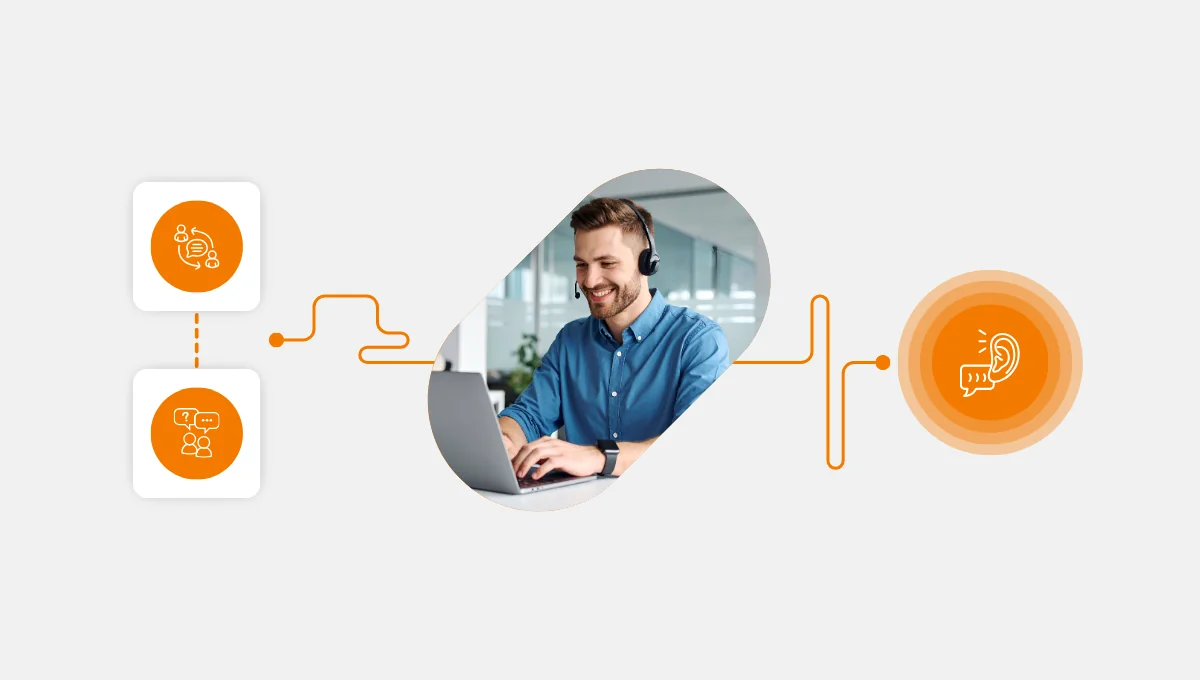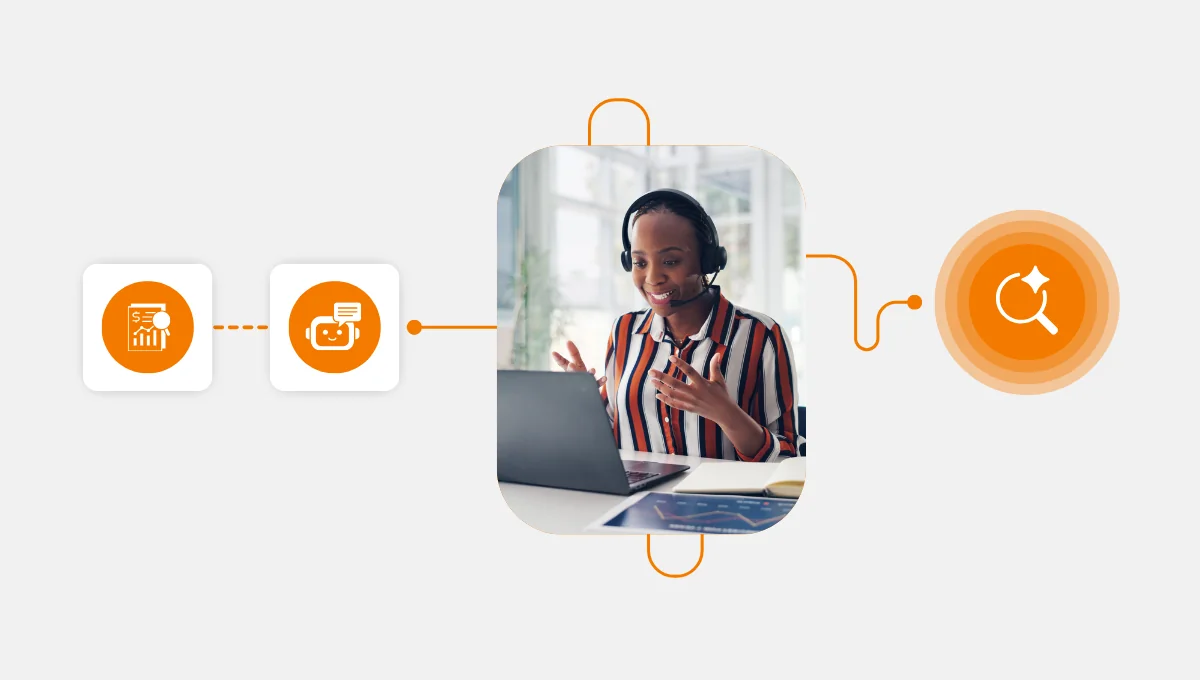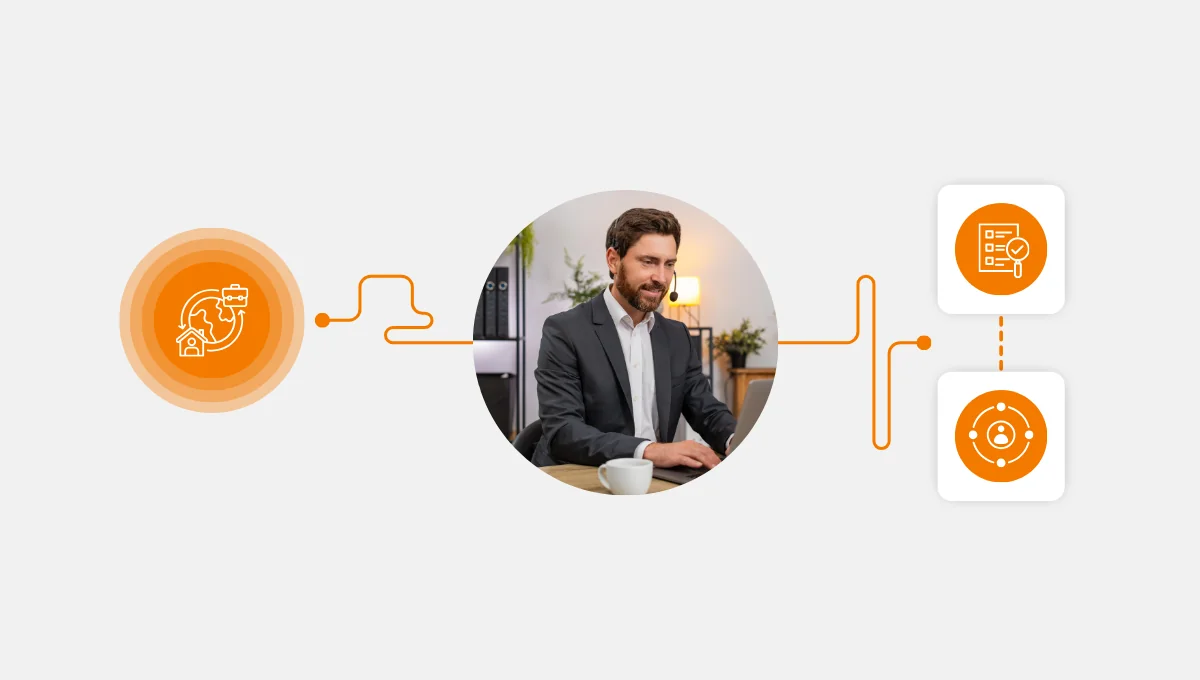As a call center agent, you’re walking a tightrope every day: listen too passively and you miss crucial details; probe too aggressively and customers feel interrogated.
Mastering these call center agent skills is essential for effective customer communication and delivering exceptional experiences.
First, let’s talk about active listening a bit, and then see the main probing techniques. Finally, we will give you 9 essential tips for mastering active listening and probing techniques.
What is Active Listening?
Active listening is fully concentrating, understanding, responding, and remembering what people are saying.
Unlike passive listening, where you’re simply waiting for your turn to talk, active listening means you’re mentally present and engaged in every moment of the conversation.
Think of it as listening with intention. You’re not just processing the surface-level information; you’re picking up on tone, emotion, pauses, and what’s not being said.
The real magic of active listening? It makes customers feel valued and understood, which naturally makes them more cooperative, patient, and willing to provide the details you need.
In a call center context, active listening means:
- Focusing completely on the customer without mentally preparing your response while they’re still talking
- Acknowledging their feelings and concerns before jumping to solutions
- Resisting distractions and giving them your undivided attention
- Reflecting back on what you’ve heard to confirm understanding
- Remembering details from earlier in the conversation to build continuity
What are Probing Techniques?
Probing techniques are strategic questioning methods that help you gather complete, accurate information needed to resolve customer issues.
Different questions serve different purposes, and knowing which to use when separates average agents from exceptional ones.
Open-Ended Probes: These questions can’t be answered with just “yes” or “no.” They encourage customers to explain, elaborate, and provide context.
- “Can you describe what happens when you try to log in?”
- “What have you tried so far?”
Closed-Ended Probes: These questions seek specific, concise answers. Perfect for confirming details or narrowing down issues.
- “Did this start today or earlier this week?”
- “Are you using a desktop or mobile device?”
Clarifying Probes: These help you understand vague or confusing information by asking for more specificity.
- “When you say it’s ‘not working,’ what exactly do you see on your screen?”
- “Can you help me understand what you mean by ‘slow’?”
Confirming Probes: These verify that you’ve understood correctly and keep you aligned with the customer.
- “So if I’m hearing you right, this only happens after business hours?”
- “Just to confirm, you’re saying the charge appeared twice?”
Leading Probes: Use these carefully. These probes are for gently guiding customers toward relevant information without putting words in their mouths.
- “Have you noticed if this happens at any particular time of day?”
- “I’m wondering if this might be related to the recent update—did you install that?”
Funnel Probing: Start broad with open questions, then gradually narrow down with more specific ones. This technique helps you efficiently zero in on the root cause without overwhelming customers.
The key to effective probing is knowing when to use each technique and how to combine them naturally in conversation. Master this, and you’ll gather better information in less time while keeping customers engaged
Now, let’s pass to the tips for active listening, and while you are using probing
1. Let Silence Do the Heavy Lifting
After asking a question, resist the urge to fill every pause. A few seconds of silence gives customers space to think and often leads them to share more than they initially planned. That awkward pause is actually your secret weapon.
Customers will naturally expand on their answers if you just give them room to breathe. This subtle aspect of customer communication is often overlooked in contact center training, yet it’s incredibly powerful.
2. Use “Echo and Expand” to Show You’re Listening
Repeat back a key phrase the customer just said, then ask them to elaborate:
“You mentioned the system crashed during your presentation. Can you walk me through exactly what happened?”
This proves you’re paying attention while naturally digging deeper without feeling like an interrogation. It’s a perfect blend of active listening and probing techniques in action.
3. Master the “Tell Me More” Family of Phrases
Keep these in your toolkit:
- “Help me understand…”
- “What happened next?”
- “Can you give me an example?”
These phrases feel conversational, not robotic, and they keep the customer talking while you gather the information you need. They’re essential call center agent skills that demonstrate both empathy in customer service and effective questioning.
4. Listen for Emotion, Not Just Facts
When a customer says, “I’ve called three times about this,” don’t just hear the number. Hear the frustration and acknowledge it before probing:
“That sounds incredibly frustrating. Let me make sure I understand what’s been happening…”
Validating emotion first makes customers more willing to provide details. This emotional intelligence directly impacts customer satisfaction and is a hallmark of excellent agent performance.
5. Use Your Notes as Listening Proof
When appropriate, reference something the customer mentioned earlier:
“You said at the beginning that this started after the update…”
This shows you’ve been tracking the entire conversation, not just waiting for your turn to talk. It builds trust and makes customers more cooperative with follow-up questions.
6. Probe with Purpose, Not a Script
Every question should have a clear reason behind it. Instead of mechanically going through a checklist, think: “What do I need to know to solve this?” If a question doesn’t serve the customer’s goal or your resolution process, skip it. Quality over quantity always wins in customer experience optimization.
7. Watch Your Tone Like a Hawk
The same question can land completely differently based on tone:
- Interrogation tone: “Why didn’t you back up your files?”
- Collaborative tone: “Just so I can help prevent this next time, were you able to back up your files?”
That shift from “why didn’t you” to “were you able to” transforms a probe from accusatory to helpful. Your tone is a crucial element of empathy in customer service that directly influences customer satisfaction.
8. Summarize Before You Probe
After a customer explains something complex, summarize what you heard before asking follow-up questions:
“Okay, so if I understand correctly, the issue happens every morning but not in the afternoon, and only on your mobile device. Is that right?”
This confirms you’re listening AND sets up targeted probing that feels logical, not random. It’s an advanced technique taught in comprehensive contact center training programs.
9. Know When to Stop Probing and Start Solving
There’s a point where you have enough information and further questions become annoying. Trust your judgment. If you can move forward with what you know, do it.
You can always circle back:
“I’m going to start working on this solution. If I need any other details, I’ll check back with you. Does that work?”
Knowing when to transition from questioning to action is a critical call center agent skill that enhances agent performance.
How Call Center Studio Empowers Agents to Excel
Mastering active listening and probing techniques takes practice, but what if you had an AI-powered contact center platform as your co-pilot?
Call Center Studio supports agents with:
- real-time sentiment analysis that alerts you when customer tone shifts,
- conversation guidance on effective questioning techniques, and
- complete conversation context so you never ask customers to repeat themselves.
Our platform delivers continuous contact center training through every interaction, suggesting which probing approach works best for each situation
Request your personnel demo today and let active listening meet intelligent technology.






